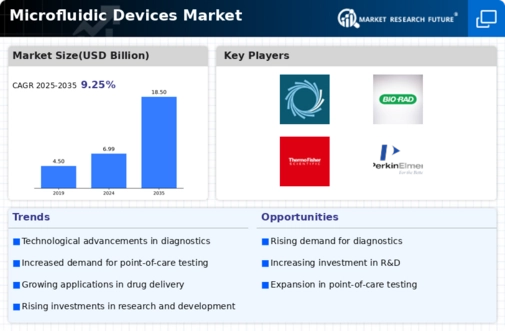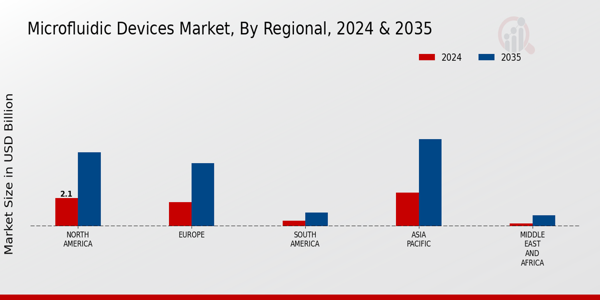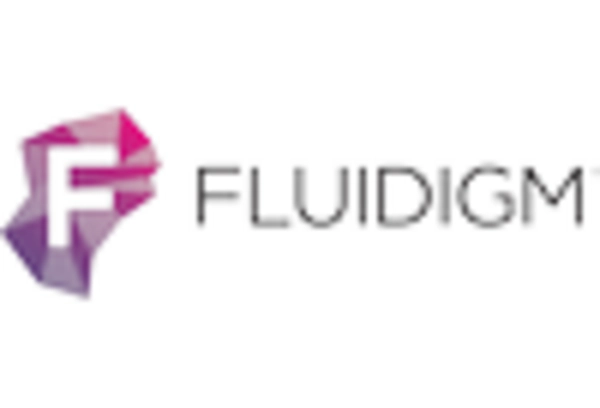Microfluidic Devices Size
Microfluidic Devices Market Growth Projections and Opportunities
The microfluidic devices market is experiencing significant growth due to rapid advancements in microfluidic technologies. Innovations in materials, fabrication techniques, and design are enhancing the capabilities of microfluidic devices, making them more versatile and applicable across various industries such as healthcare, diagnostics, and research. There has been increasing need for point-of-care diagnostics since a long time and that has derived to be a main offering driver to the microfluidic devices market. The development of microfluidic devices allows the creation of mobile and fast diagnostic tools, expanding testing sites for disease and condition to locations where such testing is possible. This is a tendency especially relevant in low-resource settings, leading to the growing nature of the market. Life sciences have been largely driven to use microfluidic devices as has been seen whereby cases in genomics, proteomics, and cell biology experiments can be executed using them. Handling of small volumes of samples efficiently by microfluidic systems is a key factor in performing high throughput experimentation/analysis and this serves to justify the use of microfluidic in academic and industrial research. Microfluidic devices have a huge demand as drug discovery and development is the pharmaceutical industry’s aim. These systems are used at different stages of drug development namely from high throughput screening to cellular respond which have advantages of low sample volumes and increased experiment. The desire for miniaturization in the laboratory processes is encouraging the growth of microfluidic devices in this field due the to efficiency in their operation. Costs reduction and increased environmental sustainability as a result of miniaturized systems, lowering the reagent consumption, sample volumes and therefore amount of waste that is generated, all influence the dynamic market. The development of microfluidic devices continues to become more common in and active part of the health care industry spanning from point-of-care diagnostic as well as personalized medicine. The integration of microfluidic techniques, the ability to perform complex biochemical analyses on a relatively small scale; makes such devices very valuable tools in the effort to improve patient care and treatment outcome. The appearance of organ-on-chip technology is a progressive development in the microfluidic devices market. Such microscale devices are replicas of the human organs to provide a platform which are expected to be useful for drug tests and modeling of diseases with physiological effect to drive microfluidic technologies. The microfluidic devices market is ventured by venture capital investments and funding support. Private sectors and corporations operating in the microfluidics area get funding for research and development which helps in driving the development of cutting edge microfluidic devices to the market. The rise in the availability of microfluidic devices in the developing regions is making new market opportunities which is further widening the market scope. Technologies like these are less accessible to the general population due to their high price, and democratising these advancements by making them cheaper and user friendly for the commoner has enabled market development in the regions which were out of reach earlier. Collaborations between microfluidic device manufacturers and players in various industries, including electronics, materials science, and biotechnology, are contributing to market expansion. These collaborations leverage diverse expertise to create integrated solutions that cater to a broad range of applications.











Leave a Comment